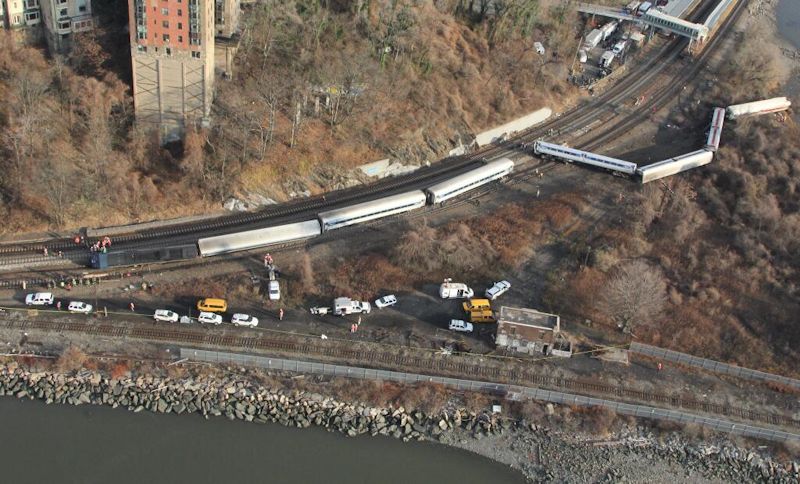

Tragedy prone Amtrak suffered another accident this week when it crashed into stationary CSX train in South Carolina. Adding to the crisis, several cars of Acela decoupled itself from each other, and a train carrying members of republican congress slammed into the garbage truck. These incidents raise concerns about the safety and reliability of passenger rail service in the United States. Amtrak, US (Federal and state) governments, Class I railroads, and transit agencies should collaborate and minimize these catastrophic events.
In South Carolina, the signal system was down and dispatchers owned by CSX were routing trains at the time of an accident. The passenger train, Amtrak was manually routed on the other track, where CSX train was stationed. This episode not only injured over 100 passengers but spilled over a thousand gallons of fuel. While on the Acela, dragging cables created sparks and the train jolted before the connector between the cars broke and separated by a six-feet gap.
Although Amtrak has recorded the highest-ridership of 31.7 million, series of accidents in last two months have raised questions on the rail service. It is important for Amtrak to address the continuous surge of problems, technical snags in the operation and maintenance, find a solution to repair its aging infrastructure, and develop more safe and reliable control systems. With the railway’s irregular signal system and manual switching systems, which caused the Amtrak train to navigate the track with help from a dispatcher at CSX, eventually resulted in a disaster.
and maintenance, find a solution to repair its aging infrastructure, and develop more safe and reliable control systems. With the railway’s irregular signal system and manual switching systems, which caused the Amtrak train to navigate the track with help from a dispatcher at CSX, eventually resulted in a disaster.
Flawed, inoperable control systems and delay in the implementation of Positive Train Control is the major reason behind Amtrak crashes. With these incidents, it brings the focus back to the mandate enforced by Federal Railroad Association on the installation of PTC on US Railroads. The original (unfunded) mandate stipulated conformance by the end of 2015, but the slow rate of implementation resulted in pushing the due date to December 2018. Also, in 2012 the Federal Railway Administration modified the mandate to eliminate the need for implementation on lines that don’t carry passengers or toxic materials.
Amtrak, US (Federal and state) governments, Class I railroads, and transit agencies should collaborate and minimize these catastrophic events like Amtrak, and provide efficient rail service to the consumers.
Increase Government Funding: Federal and state governments should push the industry harder and allocate appropriate funds to allow public transit agencies to upgrade their systems and hold railroad officials accountable for delays.
Encourage public-private partnership: There is a strong need for infrastructure investments to be better coordinated with the requirements of logistics operators. It is important for the operators to be involved in public infrastructure investment planning to ensure the efficient use of capacity. But the industry would benefit if operators, who understand the markets, had a more influential role here.
Invest with a lifecycle view: Since most of the infrastructure in developed countries was constructed in the few decades, many assets are approaching the end of their lifecycle and need to be rehabilitated or replaced. However, before committing to major capital expenditure, rail operators should first identify all possible project options and investigate more cost-effective solutions, such as throughput optimization, loss reduction, demand-side measures, system-wide capacity balancing, and targeted investments to de-bottleneck existing sites. The projects should then be selected based on a rigorous cost-benefit analysis, taking the whole lifecycle into account. In many cases, the lifecycle analysis will reveal that the long-term costs of O&M are much greater than the initial costs of construction. The lifecycle cost analysis thus needs to be performed early on and in the specific asset context to draw better return on investments.
Timely and Rapid implementation of PTC: PTC has been functioning in most of the Northeast Corridor, but not throughout the US rail network, which includes track, equipment, and assets owned by other railroad companies and transit agencies. Timely and rapid implementation of PTC will enable efficient and safe train operations and reduce catastrophic events.

